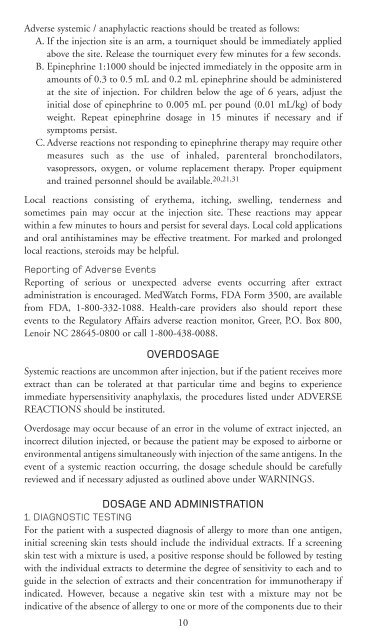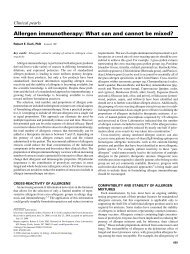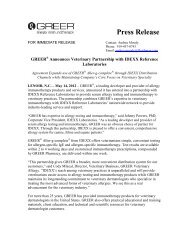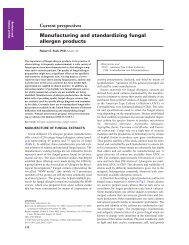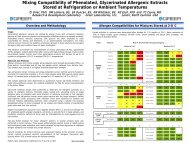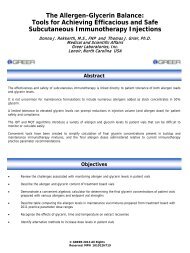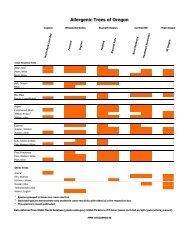Human Allergy Catalog - Greer
Human Allergy Catalog - Greer
Human Allergy Catalog - Greer
You also want an ePaper? Increase the reach of your titles
YUMPU automatically turns print PDFs into web optimized ePapers that Google loves.
Adverse systemic / anaphylactic reactions should be treated as follows:A. If the injection site is an arm, a tourniquet should be immediately appliedabove the site. Release the tourniquet every few minutes for a few seconds.B. Epinephrine 1:1000 should be injected immediately in the opposite arm inamounts of 0.3 to 0.5 mL and 0.2 mL epinephrine should be administeredat the site of injection. For children below the age of 6 years, adjust theinitial dose of epinephrine to 0.005 mL per pound (0.01 mL/kg) of bodyweight. Repeat epinephrine dosage in 15 minutes if necessary and ifsymptoms persist.C. Adverse reactions not responding to epinephrine therapy may require othermeasures such as the use of inhaled, parenteral bronchodilators,vasopressors, oxygen, or volume replacement therapy. Proper equipmentand trained personnel should be available. 20,21,31Local reactions consisting of erythema, itching, swelling, tenderness andsometimes pain may occur at the injection site. These reactions may appearwithin a few minutes to hours and persist for several days. Local cold applicationsand oral antihistamines may be effective treatment. For marked and prolongedlocal reactions, steroids may be helpful.Reporting of Adverse EventsReporting of serious or unexpected adverse events occurring after extractadministration is encouraged. MedWatch Forms, FDA Form 3500, are availablefrom FDA, 1-800-332-1088. Health-care providers also should report theseevents to the Regulatory Affairs adverse reaction monitor, <strong>Greer</strong>, P.O. Box 800,Lenoir NC 28645-0800 or call 1-800-438-0088.OVERDOSAGESystemic reactions are uncommon after injection, but if the patient receives moreextract than can be tolerated at that particular time and begins to experienceimmediate hypersensitivity anaphylaxis, the procedures listed under ADVERSEREACTIONS should be instituted.Overdosage may occur because of an error in the volume of extract injected, anincorrect dilution injected, or because the patient may be exposed to airborne orenvironmental antigens simultaneously with injection of the same antigens. In theevent of a systemic reaction occurring, the dosage schedule should be carefullyreviewed and if necessary adjusted as outlined above under WARNINGS.DOSAGE AND ADMINISTRATION1. DIAGNOSTIC TESTINGFor the patient with a suspected diagnosis of allergy to more than one antigen,initial screening skin tests should include the individual extracts. If a screeningskin test with a mixture is used, a positive response should be followed by testingwith the individual extracts to determine the degree of sensitivity to each and toguide in the selection of extracts and their concentration for immunotherapy ifindicated. However, because a negative skin test with a mixture may not beindicative of the absence of allergy to one or more of the components due to their10


